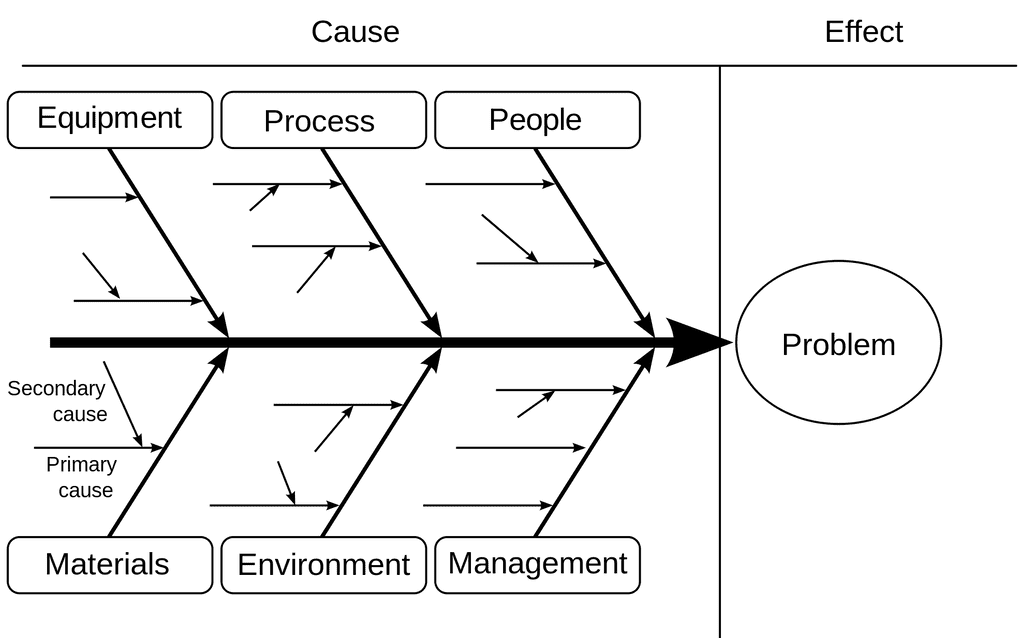Fishbone Diagram
The Fishbone Diagram (or, if you want to be fancy: the "Ishikawa Diagram", named after its creator Kaoru Ishikawa) is used to brainstorm root causes of problems. It resembles a fish. The problem you are trying to diagnose is written on the "head" of the fish, and the possible causes are listed on branches protruding from the "spine" of the fish. Each branch enumerates causes of a different type:
The diagram above the branches are labeled:
- Equipment
- Materials
- Process
- People
- Environment
- Management (or Measurements)
These branches can be varied based upon use. Some examples replace "Management" with "Measurements." Manufacturing will sometimes use the "6 Ms":
- Machine (Equipment)
- Method (Process)
- Materials
- Man Power (People)
- Measurements (Inspection)
- Mother Nature (Environment)
The purpose of the diagram is to assist in brainstorming and to identify all of the potential causes (similar to an Issue Tree). When brainstorming, you want to try to think of potential causes from each of the branches. If all of the causes are centered on a few branches, it may indicate that those are the biggest causes of the problem - or it may indicate that you have not thought outside the box for other potential causes.
LEI introduced this tool as part of their 6-Step Problem Solving process. We used it to brainstorm potential root causes, identify two causes that we thought were "main" causes of the problem, and follow these up with an in-depth investigation to verify that these were causing the problem and quantify their impact. At Toyota, it is said that every single cause that goes on an Ishikawa diagram is thoroughly investigated, and you are not allowed to put a cause on the diagram until you have investigated it and can quantify how often it occurs and how large it's impact is on the problem. Our modified approach to simplify this was to just pick 2 root causes and investigate these. If these were confirmed as root causes we could then propose countermeasures to them. If not, we would would have to identify two new causes and investigate those until we had verified a root cause of the problem.
